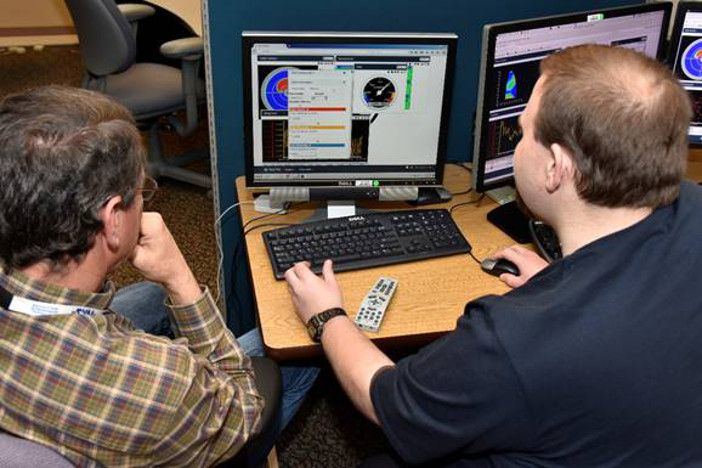Software engineers at Arnold Air Force Base have modified the Real-Time Test Display System (RealTDS) to better meet test customers’ needs and make the system more user-friendly.
The RealTDS is software that enables project teams and test customers to view data in real time. It has been evaluated at the Arnold Engineering Development Complex (AEDC) with the legacy system for two years and officially went into production earlier this year.
Cameron Liner, chief of Test Information Systems Section for the Test and Communications Branch at Arnold, said, “RealTDS represents the best of AEDC’s ability to innovate using a blend of commercial off-the-shelf and locally developed solutions. Being able to view data in real time is key to ensuring data quality, maintaining safe operations, and increasing our agility to make course corrections during test.”
Chad Dotson, software engineer and part of the RealTDS development team, said, “RealTDS is available in any test unit on base – from the wind tunnels to engine test cells. We’re now able to share ideas between mission areas that have not traditionally done so.”
A key improvement has been to the RealTDS Every Sample Server. RealTDS web clients require the Enterprise Data Acquisition and Processing System (EDAPS) or eStarr Every Sample data, which is high-throughput data system.
“What RealTDS does is pull data from eStarr and feed it directly out to clients,” Dotson said. “It’s able to handle huge amounts of data, up to 100,000 samples a second, so it’s rendering at 40 million data points per second.”
He added that while individual data requirements vary, clients should be able to use RealTDS and have as many of the desired applications up and running with no impact to the server.
“We enabled RealTDS to keep all sample data in larger binary buffers and access it minimally,” Dotson said. “The larger buffers are then transmitted without modification to web clients. As a result, RealTDS web clients are able to receive data at the rate required for Every Sample Displays.”
The system is now set up to handle the large data format without slowing the process down.
“JavaScript garbage collection can be detrimental and excessive when running RealTDS,” Dotson said. “So, the large binary buffers also allow RealTDS client code to use more efficient C-like memory copies and access data directly from these buffers instead of creating extra objects that take up computer memory.”
Jeff Mann, a software engineer at AEDC, who assisted in the further development of Every Sample Display, said that because a large amount of data is pulled when using the RealTDS program, it uses up a great deal of central processing unit (CPU) time.
“We need the ability to render the data on mid-level PCs without the use of special hardware being added. The solution was to eliminate the impact from JavaScript garbage collection by using C-type structures and circular buffers,” said Mann.
CPU time was also dramatically reduced by pushing most of the processing to the graphics processing unit using vertex shaders.
“A vertex shader is used to transform the attributes of vertices, or points of a triangle, such as color, texture, position and direction, from the original color space to the display space,” Mann said. “You can now have 40 million points per second on a standard computer with much higher data rates possible with better graphic cards.”
Test analysts have provided positive feedback, noting that RealTDS is a definite improvement from the legacy systems that were being used.
“RealTDS has added new capabilities that enhance online validation and situational awareness, and this has greatly simplified the setup of online displays,” said Joel Nalin, Aeropropulsion test analyst.
Adam Moon, also an Aeropropulsion test analyst at Arnold, added, “RealTDS has done an excellent job of keeping legacy system functionality, while providing test analysts with new tools. We are now able to construct more detailed online analysis screens that are more unique and flexible than we have previously been provided with.”
Liner said that in addition to creating one system for data rendering, RealTDS has also provided cost savings. “Because the capabilities are shared across the mission areas, RealTDS provides a lower total cost to the owner for AEDC systems,” he added.





